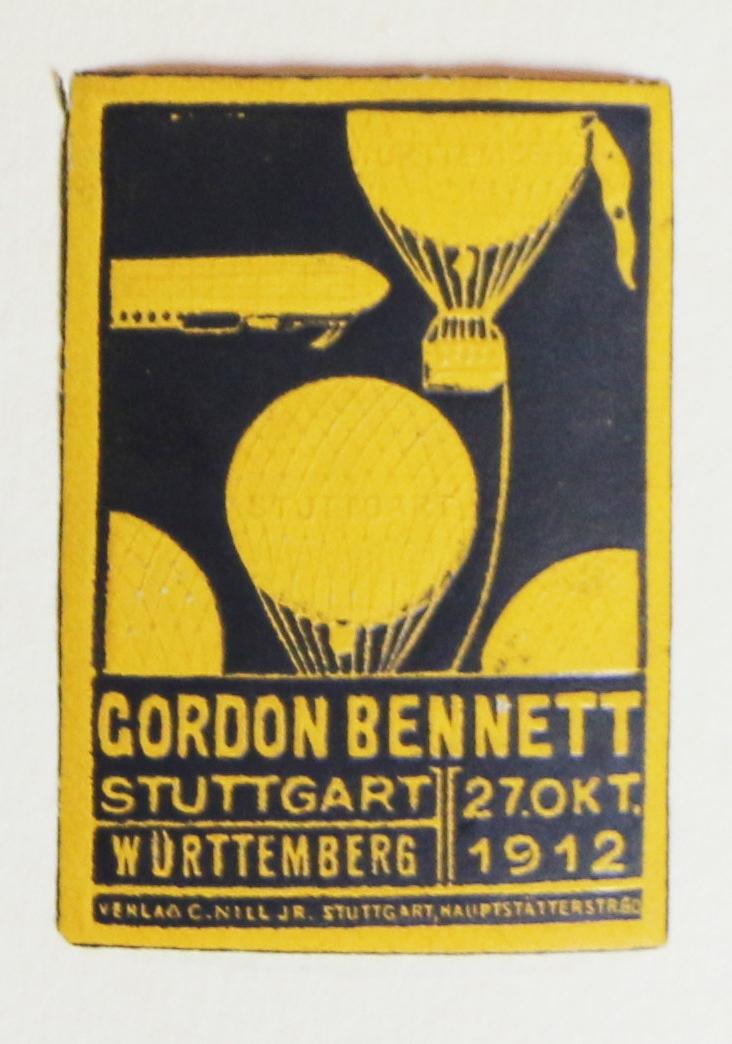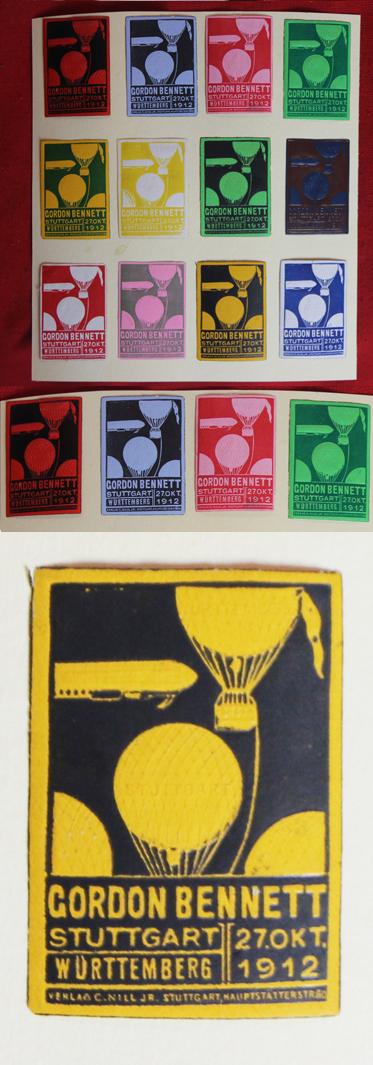Germany 1912 Gordon Bennett Zeppelin Airship Flight, 12 Poster Vignette Cinderella Stamps
Original, period vignette for 1912 Gordon Bennett air show with pioneering German Zeppelin before WWI. Size 1.5 x 2 inches Gum: MH {Mint Hinged} Photographed against a card background, but all the stamps are gummed and separate.
Very rare to get large number sets. Two sets of x 12, we have 24 but we have split them for sale into 2 sets of 12.
The 1914 Cazin and Rochas catalog claims they were printed in nine colours of ink on nine different papers
The Gordon Bennett Cup (or Coupe Aéronautique Gordon Bennett) is the world's oldest gas balloon race, and is "regarded as the premier event of world balloon racing" according to the Los Angeles Times. Referred to as the "Blue Ribbon" of aeronautics, the first race started from Paris, France, on September 30, 1906. The event was sponsored by James Gordon Bennett Jr., the millionaire sportsman and owner of the New York Herald newspaper. According to the organizers, the aim of the contest "is simple: to fly the furthest distance from the launch site." The contest ran from 1906 to 1938, interrupted by World War I and in 1931, but was suspended in 1939 when the hosts, Poland, were invaded at the start of World War II. The event was not resurrected until 1979, when American Tom Heinsheimer, an atmospheric physicist, gained permission from the holders to host the trophy.
With its extraordinary fineness and silky matt surface, bisque porcelain exudes an unmistakable charm. Sculptural qualities, modelling skills and decorations such as reliefs are shown to full effect and are further accentuated by the material’s fascinating tactile quality. Developed in the 18th century by the French painter Jean-Jacques, the fine material rose to prominence as a substitute for ivory, alabaster and marble in the manufacture of the Château Vincennes. To this day, bisque porcelain is often compared to marble because of its unique way of diffusing light rather than reflecting it. At MEISSEN, this effect and material quality is achieved by polishing the unglazed surface of fired porcelain pieces in painstaking detail, resulting in the bisque's characteristic velvety soft surfaces.
Porcelain in its purest form. Contrary to popular belief, bisque porcelain has the same properties as its glazed counterparts in terms of density, hardness, strength and resistance. By omitting the glaze, details, such as sculptural swerves, elaborate embossing work and decorations, such as reliefs, are highlighted and given a unique tactile quality, showing off the skills of Meissen artisans in a particularly compelling way
Code: 25113
180.00 GBP




